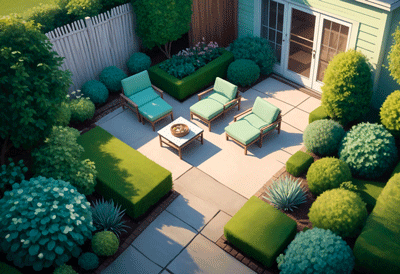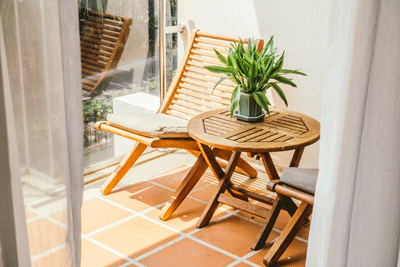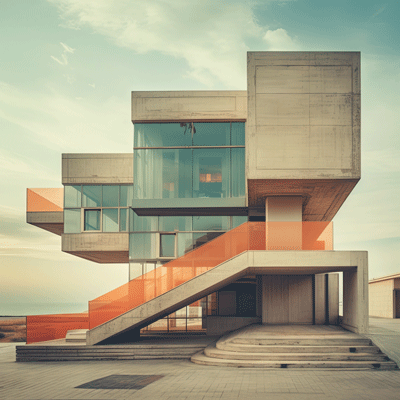
Interior & Exterior Design
Kitchen Design & Decoration
Essential Tips for Designing a Functional and Beautiful Kitchen
The kitchen is often the heart of the home. A successful design blends efficiency, storage, and style to create a space that is both a joy to cook in and a welcoming place to gather.
1. Master the Layout: The Work Triangle
The classic “Work Triangle” connects the three main work areas: the sink, the stove, and the refrigerator.
Efficiency: The sum of the three sides of the triangle should be between 13 and 26 feet. Each leg should be between 4 and 9 feet.
Clear Pathways: No major traffic should flow through the triangle. Keep the area clear of islands or other obstacles.
Common Layouts:
L-Shaped: Great for open-plan homes and small to medium kitchens. Fits nicely into a corner.
U-Shaped: Offers maximum counter and storage space. Very efficient for one cook.
Galley/Corridor: Highly efficient for a single cook, with everything within easy reach.
Island: Adds prep space, seating, and storage. Ensure at least 42 inches (105 cm) of clearance around it for traffic flow.
2. Prioritize Storage and Organization
“A place for everything and everything in its place” is the kitchen’s golden rule.
Cabinet Types: Mix base cabinets, wall cabinets, and tall cabinets (for pantry and appliances).
Maximize Every Inch:
Deep Drawers: Are far more functional than standard base cabinets with shelves. They allow you to see and access everything easily.
Pull-Out Shelves & Organizers: Use them for pantry items, pots, pans, and cleaning supplies.
Corner Solutions: Implement lazy Susans or magic corner units to utilize dead corner space.
Vertical Storage: Use the insides of cabinet doors for spice racks, and install pot racks or shelves on empty walls.
3. Choose Durable and Suitable Materials
The kitchen faces heat, moisture, spills, and heavy use. Material choice is critical.
Countertops:
Quartz: Non-porous, durable, low maintenance, and available in many colors/patterns.
Granite: Natural stone, very hard, but requires periodic sealing.
Butcher Block: Warm and beautiful, but requires regular oiling to prevent damage.
Laminate: A budget-friendly option with improved designs that mimic natural materials.
Flooring: Choose something hard-wearing and comfortable to stand on. Porcelain tile, luxury vinyl plank (LVP), and hardwood are popular choices.
Cabinetry: Look for solid construction (dovetail joints are a sign of quality) and durable finishes.
4. Plan a Logical Workflow (The Kitchen Zones)
Think beyond the triangle and organize your kitchen into dedicated zones for a smoother workflow.
Consumable Zone (Pantry/Fridge): Where food is stored.
Non-Consumable Zone (Cabinets): Where dishes, glasses, and cutlery are stored.
Cleaning Zone (Sink/Dishwasher): The main area for cleanup.
Preparation Zone (Countertop): Ample, clear counter space between the sink and stove.
Cooking Zone (Stove/Oven): Area for pots, pans, utensils, and spices.
5. Layer the Lighting
Good lighting is essential for safety and ambiance.
Task Lighting: Provides focused light for work areas. Install under-cabinet lighting to illuminate countertops and eliminate shadows. Recessed lights over the sink and stove are also key.
Ambient (General) Lighting: Provides overall illumination for the room, often from ceiling-mounted fixtures like recessed lights or a pendant.
Accent Lighting: Used to highlight features, like inside glass-front cabinets or above open shelving.
Dimmers: Install dimmer switches for all lighting to control the mood, from bright and functional for cooking to soft and warm for entertaining.
6. Pay Attention to Ventilation and Appliances
Ventilation: A good range hood that vents to the outside is crucial. It removes grease, odors, and moisture, protecting your health and your kitchen. Choose a hood with adequate power (CFM – Cubic Feet per Minute) for your stove.
Appliance Placement: Plan your appliance locations early. Consider a “landing zone” next to the oven and microwave for placing hot dishes. Ensure refrigerator doors can open fully without obstruction.
7. Incorporate Safety and Practical Details
Child Safety: If applicable, consider rounded countertop edges, locking cabinets, and stove knob guards.
Slip-Resistant Flooring: Especially important in a room prone to spills.
Easy-to-Clean Surfaces: Choose backsplashes that are smooth and non-porous (like glass or ceramic tile) for easy wiping.
8. Add Personality and Finishing Touches
Backsplash: This is your chance to add color, texture, and pattern. It’s a smaller commitment than cabinet color and can be a great focal point.
Hardware: Cabinet pulls and knobs are the “jewelry” of the kitchen. They can dramatically change the style of your cabinetry.
Faucet: Choose a stylish and functional faucet. A pull-down sprayer is highly practical.
Color Palette: Decide on a cohesive color scheme. A common approach is to have neutral cabinets and counters and then introduce color through the backsplash, accessories, or an accent island.
Common Kitchen Design Mistakes to Avoid
Ignoring the Workflow: Placing the sink, stove, and fridge too far apart or in an illogical order.
Insufficient Counter Space: Not having enough clear, usable counter space for food prep and appliances.
Poor Lighting: Relying on a single, central ceiling light, which creates shadows on all your work surfaces.
Neglecting the Trash/Recycling: Not planning a convenient, dedicated spot for the garbage and recycling bins.
Forgetting Outlets: Not having enough electrical outlets, or placing them in the wrong locations for small appliances.
Remember, a great kitchen design is not just about how it looks, but how it works for you and your family.






